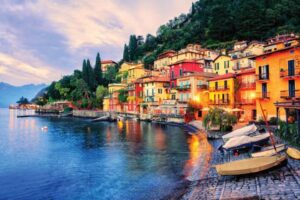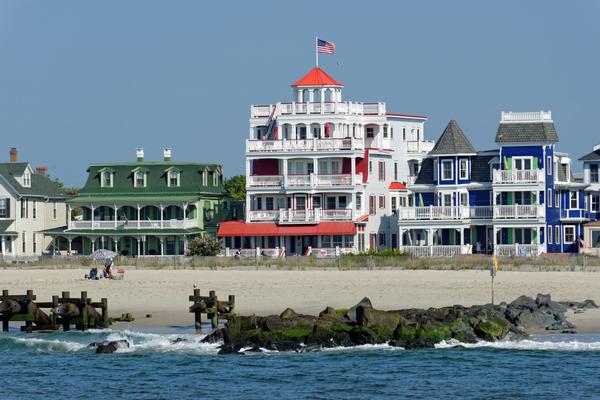5 Reasons Cape May Is Different Than Other Jersey Shore Towns
The Jersey Shore is loaded with small beach towns, from the outskirts of New York all the way down to the southern tip of the state. While television shows have portrayed the “Jersey shore” a certain way, it could not be further from the reality in the majority of places.
South Jersey’s coast is full of options, from the casinos and shows in Atlantic City to the quiet, non-alcoholic family town of Ocean City. But our favorite of the bunch, Cape May, lies somewhere in between in terms of its vibe, and as far south as you can get in the state.
The more things have changed, the more they have stayed the same in Cape May.
Cape May has changed a lot—one can certainly see the growth—but in a way, it hasn’t changed at all.
The Lenape Indians, the Native American tribe(s) that once inhabited Southern New Jersey, are said to have “vacationed” in Cape May during the hottest months of the year, escaping to the cool ocean breezes to fish, hunt and gather.
Today, the ocean remains the main draw as a respite for those in nearby cities (like Philly), and Cape May’s reputation as an agricultural region, as you’ll see, is still strong.
While more people have moved to the area, and while the amount of people who visit has grown, the town is the same old place it has always been—one of relaxation and recreation for those living nearby.

Victorian Homes and Charm
In 1878, tragedy struck Cape May—a massive fire broke out, and 30-some blocks of the town were destroyed. A very bad thing, obviously, but the way the town was rebuilt is one of its greatest charms today.
MORE Destination & Tourism
After losing 30 blocks, many homes had to be rebuilt, and they were all built in the style of the era: Victorian. That is why, today, Cape May has one of the largest collections of Victorian homes in the nation (some say it’s the largest outside of San Francisco, but I have been unable to confirm). They are a sight to see at night, lit up and decorated according to the season.
Wide-range of lodging choices, but nothing that lets you forget it’s a beach town.
When walking the streets of Cape May, seeing all the large porches and pointed roofs, it becomes clear that these homes are an unmistakable part of the town’s personality. But they’re not just for show. Many have been converted into Bed and Breakfasts, allowing guests not only a look, but also an experience inside. For a first-timer to Cape May, it’s the way to go—it is in these old houses that you will get the best feel for the town.
Cape May has never been known for fancy lodging—it has traditionally been defined as quaint, like the Victorian homes, or straight-up classic, like low-key, seaside hotels—and even its flashiest options keep a low profile. The Lokal Cape May, for example, provides modern luxury but operates as apartment-style lodging that feels more like an Airbnb than it does a hotel.
Cape May wouldn’t feel like Cape May if it began building large seaside resorts, and the locals seem to know that, thus far keeping all development incremental.

There’s much more to its natural appeal than just the beach.
Every beach town has a beach…what else you got? It sounds like a petty question, but there are infinite beach towns to choose from, and guess what they all have in common? Looking beyond the beach in a beach town helps nudge one above the next.
In the case of Cape May, there’s a lot of love about its surrounding landscape. The South Cape May Meadows, a 200-acre preserve, is a haven for local birds and wildlife, not to mention a peaceful walk through open space (the Cape May Bird Observatory Northwood Center is also a must-visit for birders).
South of that, you will find the Cape May Lighthouse and the Cape May Wetlands. North Cape may is where you find something you almost never see in a beach town.
The Wine is Fine—As Is the Local Produce
It’s not just about wildlife preserves in Cape May; the local landscape also offers scenic beauty. Much of the land north of downtown is agricultural (Jersey is, after all, the Garden State) and provides a glimpse of farm life in a beach town. Local produce is everywhere, including grapes and winemaking.
Cape May has four wineries, including Willow Creek, which has a big, California-style tasting room that overlooks the fields. Go local and pick up a bottle or two, and some local tomatoes, corn and squash, for a beachside grill out. Not that you need to cook every night—Cape May is rich with restaurants, including the enchanting Peter Shields Inn.
You may be interested

Strava closes the gates to sharing fitness data with other apps
admin - Nov 20, 2024[ad_1] We wanted to provide some additional context around the changes to our API Agreement and the impact for our…

Irish star Paul Mescal bluntly appraises his meeting with the King
admin - Nov 20, 2024[ad_1] Irish actor Paul Mescal says meeting King Charles was not on his "list of priorities".The 28-year-old star was introduced…

A study found that X’s algorithm now loves two things: Republicans and Elon Musk
admin - Nov 17, 2024[ad_1] Elon Musk’s X may have tweaked its algorithm to boost his account, along with those of other conservative-leaning users,…
Leave a Comment
You must be logged in to post a comment.























